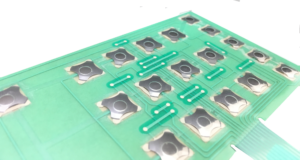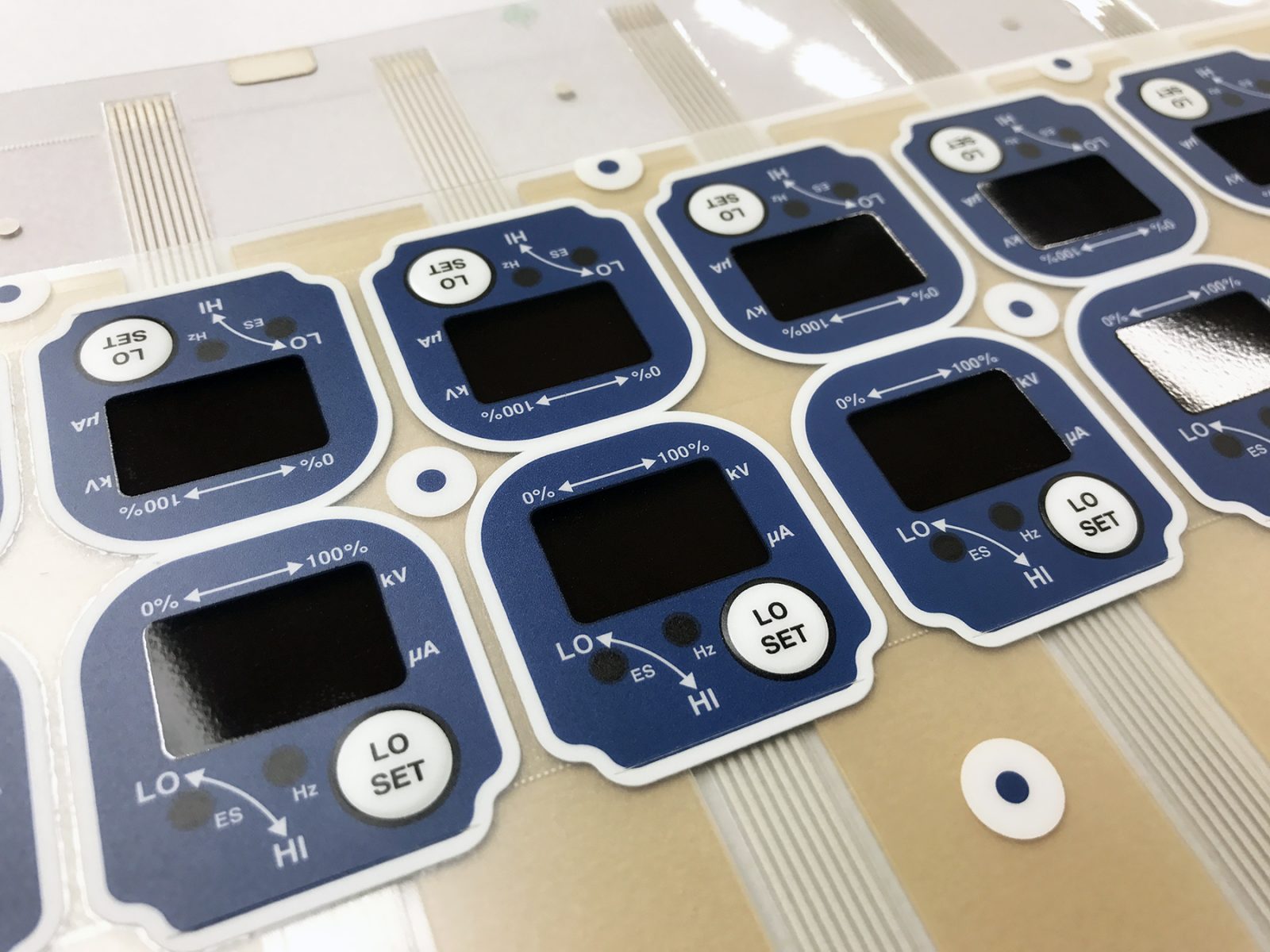Membrane Layer Switch Over Modern Technology: The Key to Reputable and Cost-Effective Interfaces
Membrane switch modern technology has emerged as a crucial element in the layout of customer interfaces, giving both reliability and cost-effectiveness across a varied array of applications. As we discover the multifaceted benefits of membrane layer switches, their potential for development increases concerns about future applications and evolving patterns.
Understanding Membrane Change Modern Technology
Membrane button modern technology is an extensively made use of user interface option in different electronic gadgets, offering a seamless blend of capability and design. This innovation integrates numerous layers of materials, normally including a visuals overlay, spacer layer, and a circuit layer. The visuals overlay displays the user interface aspects, while the spacer layer divides the circuit layer from the overlay up until a customer triggers a button.
When pressure is put on the overlay, the circuit layer completes the electric circuit, sending a signal to the gadget. This system enables various configurations, including responsive responses and backlighting options, boosting user interaction. Membrane switches are commonly manufactured using long lasting products such as polyester or polycarbonate, ensuring longevity and resistance to environmental elements like dampness and dirt.
The versatility of membrane changes enables their application in diverse industries, including clinical devices, customer electronics, and industrial controls. Their small design permits for integration into space-constrained environments, giving an efficient interface without compromising visual allure. Comprehending the details of membrane layer switch innovation is vital for manufacturers and designers looking for to develop trustworthy and efficient human-machine user interfaces.
Trick Benefits of Membrane Buttons
While numerous interface remedies exist, membrane layer switches offer distinct advantages that make them a recommended selection in many applications. Among the primary benefits is their resilience; membrane layer buttons are designed to withstand harsh ecological conditions, including dampness, dust, and temperature fluctuations, making certain resilient performance. This resilience substantially decreases the demand for regular substitutes, thus decreasing total upkeep expenses.

Additionally, membrane switches are lightweight and small, making them appropriate for applications where room is restricted. Their inconspicuous design adds to a sleek appearance without jeopardizing performance.
Cost-effectiveness is additionally a significant benefit, as the production procedure for membrane layer switches over tends to be cheaper contrasted to traditional mechanical switches. This cost, integrated with their dependability and simplicity of setup, positions membrane switches as a useful service for a vast array of industries seeking reliable and reliable customer interfaces.
Applications Throughout Different Industries
Just how do membrane layer switches adapt to the diverse demands of numerous sectors? Membrane switch innovation is progressively acknowledged for its adaptability, making it appropriate for a wide variety of applications across multiple markets. In the medical area, membrane buttons are utilized in analysis devices and patient tracking devices, where their durability and convenience of cleaning are crucial for preserving hygiene standards. The automotive market employs these switches in control panels and control board, providing a structured aesthetic while making certain easy to use operation.
In consumer electronics, membrane buttons offer a compact option for remote controls and home appliances, enhancing user experience via intuitive design. Furthermore, the commercial industry leverages membrane layer buttons for equipment control board, benefiting from their resistance to severe environments, such as moisture and dust.
Army and aerospace applications additionally utilize membrane buttons for their integrity and capacity to stand up to extreme conditions, making sure functional efficiency in essential scenarios. The food and drink industry takes on these buttons for automated systems, where hygiene and convenience of operation are critical (membrane switch). Inevitably, membrane switches are tailored to meet the distinct needs of each industry, proving their important duty in modern technology interfaces
Layout and Personalization Choices

In the world of membrane button technology, design and customization options play a crucial duty in boosting functionality and customer communication. These buttons can be customized to meet specific operational requirements and visual preferences, making them flexible parts in various applications.
Among the main modification alternatives is the design of the switch itself, which can be made to fit special user interfaces and ergonomic factors to consider. By changing the shape, dimension, and arrangement of switches, manufacturers can produce instinctive styles that help with ease of usage. Additionally, the consolidation of different colors and visuals overlays enables for branding and boosted exposure, making sure that customers can swiftly identify functions.
Additionally, membrane layer switches can be engineered with various responsive responses mechanisms, such as increased buttons or audible clicks, to improve the customer experience. Different products can also be picked for sturdiness and environmental resistance, resolving factors such as moisture, temperature level changes, and chemical exposure.
Ultimately, the comprehensive layout and customization alternatives available in membrane button innovation equip organizations to discover this produce customized remedies that not official source only satisfy useful needs yet also line up with their branding and operational needs.

Future Fads in Membrane Switches
As membrane layer button modern technology continues to progress, future patterns are significantly concentrated on boosting individual experience and integrating sophisticated capabilities. One substantial trend is the combination of touch-sensitive and capacitive technologies into traditional membrane switches. This development allows for even more intuitive interface, giving tactile responses while preserving a streamlined design.
Another arising fad is making use of ecologically friendly materials, driven by the expanding demand for lasting production techniques. Manufacturers are looking for to reduce their carbon footprint by making use of recyclable substratums and low-impact inks, aligning with global sustainability goals.
Additionally, the rise of the Internet of Things (IoT) is motivating the unification of clever attributes right into membrane layer buttons. Boosted connectivity alternatives will certainly allow devices to connect with each various other, permitting smooth assimilation right into wider systems.
Furthermore, advancements in printing innovations, such as digital printing, are enabling for better design flexibility and modification. This allows suppliers to create elaborate layouts and lively shades cost-effectively.

Verdict
In verdict, membrane layer switch innovation stands for a crucial technology in individual interface layout, using significant benefits in toughness, modification, and cost-effectiveness. Its widespread applicability across varied industries underscores its relevance in contemporary innovation. As advancements remain to emerge, specifically in touch-sensitive interfaces and sustainable products, the potential for membrane switches to enhance customer experience and functionality continues to be Look At This promising. Proceeded exploration of this modern technology will likely yield further enhancements and widen its scope in future applications.